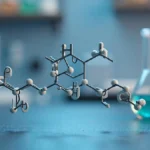For decades, mental health treatment has relied on a combination of medication, psychotherapy, and lifestyle changes. While these methods have helped millions, many patients continue to struggle with depression, anxiety, and trauma that don’t fully respond to conventional treatments. In recent years, however, a new wave of research and clinical trials has begun to reshape the conversation. Psychedelic therapy once dismissed as countercultural is now being studied by major universities and mental health organizations worldwide. Could it be the next frontier in psychiatry?
The science behind the shift
At its core, psychedelic therapy involves the supervised use of substances like psilocybin (found in “magic mushrooms”), MDMA, or LSD in controlled clinical environments. These substances are not used for recreation, but rather to promote deep psychological insight and emotional healing under the guidance of trained professionals.
Studies from institutions such as Johns Hopkins University and Imperial College London have shown that psilocybin can help reduce symptoms of treatment-resistant depression and post-traumatic stress disorder (PTSD). During these psychedelic-assisted therapy sessions, patients often experience enhanced emotional openness, greater self-awareness, and a new perspective on personal struggles. Scientists believe psychedelics temporarily “reset” rigid patterns of brain activity, allowing patients to process memories and emotions that traditional therapy alone may not reach.
Global research and growing acceptance
The resurgence of interest in psychedelic research isn’t limited to academic curiosity it’s part of a broader reevaluation of how society understands mental health. In several countries, this approach has already moved from theory to practice.
Switzerland, New Zealand, Germany, and the Czech Republic have begun allowing regulated psychedelic-assisted therapy sessions in medical or research settings. These programs follow strict safety protocols, requiring professional supervision, pre-screening, and integration therapy afterward. The results so far are promising: many participants report not only symptom relief but also lasting changes in their sense of purpose and emotional well-being.
As these programs expand, other countries are closely observing the outcomes. In the United States, for example, the FDA has granted “breakthrough therapy” status to psilocybin and MDMA for treating depression and PTSD a sign that legalization for therapeutic use could be on the horizon.
The therapeutic process: more than just a substance
One of the most important aspects of psychedelic therapy is that it is not simply about taking a drug. The process is carefully structured around preparation, the guided experience itself, and post-session integration.
Before any psychedelic-assisted therapy sessions, patients meet with therapists to establish trust and set intentions for what they hope to explore. During the session, participants are monitored in a calm, supportive environment often with soothing music and minimal distractions. Afterward, therapists help them make sense of what they experienced, linking insights to their everyday lives and long-term healing.
This holistic framework differentiates clinical psychedelic therapy from casual or recreational use. It’s designed to ensure safety, stability, and meaningful outcomes, minimizing the risk of anxiety or confusion that can arise from unstructured experiences.
Why patients and doctors are paying attention
Traditional antidepressants can take weeks or months to show results, and their effectiveness often varies. Psychedelic therapy, by contrast, can sometimes produce measurable improvement after just one or two sessions. For patients who have spent years trying to manage depression, trauma, or addiction, that potential is life-changing.
Doctors and psychologists are also intrigued by how this therapy helps patients reconnect with suppressed emotions and gain perspective on their struggles. Many describe the process as a “shortcut” to self-understanding not because it bypasses effort, but because it unlocks parts of the mind that have been closed off by years of pain or conditioning.
Challenges and cautious optimism
Despite its promise, psychedelic therapy still faces hurdles. Regulatory approval, ethical guidelines, and therapist training are essential to ensure safe and effective implementation. There is also a need for more long-term data most studies so far have small sample sizes.
Critics warn against overstating its benefits or turning it into a commercial trend. However, the growing body of scientific evidence suggests that with the right framework, psychedelic therapy could become a powerful complement to traditional psychiatry.
A new chapter in mental health care
The idea that substances once seen as dangerous could become tools for healing marks a major turning point in modern psychology. For many experts, psychedelic therapy represents not a radical departure from medicine, but a long-overdue integration of neuroscience, psychology, and spiritual experience.
If early results continue to hold, it’s only a matter of time before this approach becomes part of mainstream treatment not as a miracle cure, but as a carefully guided path toward self-awareness and emotional renewal.
As more research unfolds and psychedelic-assisted therapy sessions become accessible under safe and regulated conditions, mental health care may be entering one of its most transformative eras yet.










